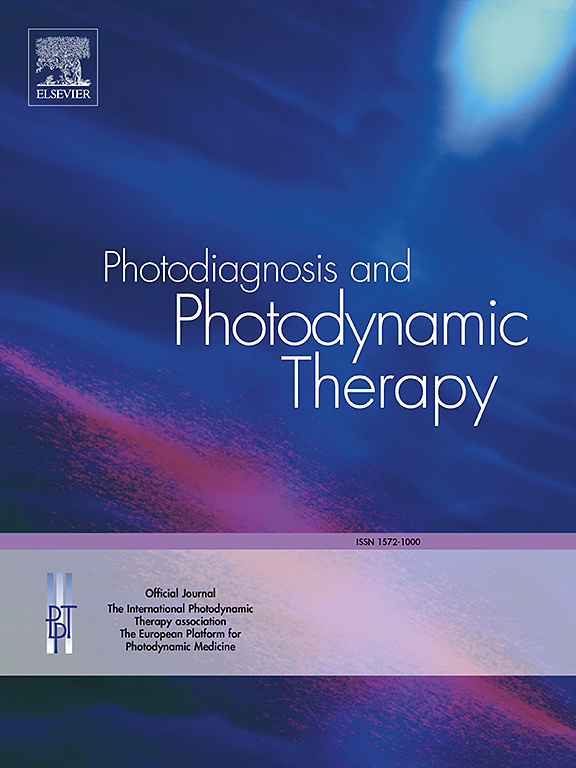Highly malignant tumor cells accumulate less PpIX and enhanced cell dormancy increases PpIX accumulation
IF 3.1
3区 医学
Q2 ONCOLOGY
引用次数: 0
Abstract
Background
5-Aminolevulinic acid photodynamic diagnosis (ALA-PDD) is a method for real-time diagnosis of cancer areas based on the specific accumulation of protoporphyrin IX (PpIX) in tumor cells following ALA administration and subsequent detection using fluorescence. However, its effectiveness is limited due to false negatives caused by tumor cells accumulating low amounts of PpIX after ALA administration. In order to increase the detection sensitivity of ALA-PDD, it is important to understand the characteristics of cells with low or high PpIX accumulation. This research sought to determine the factors affecting ALA-induced PpIX accumulation in tumor cells
Methods
Tumor cells were separated into two groups according to PpIX accumulation levels using FACS and the cellular characteristics were compared.
Results
The data of expression of RANKL, a tumor malignancy marker, showed that tumor cells with low PpIX accumulation are more malignant. Results also showed marked differences in PpIX efflux transporter activity and the extent to which iron atoms are being inserted into the porphyrin ring, resulting in loss of fluorescence. Interestingly, it was found tumor cells with high PpIX accumulation are in dormant state as indicated by low proliferation and suppression of glucose metabolism.
Conclusion
Tumor cells with low PpIX accumulation are characterized as high tumor grade and low cell dormancy.
高度恶性肿瘤细胞积累较少PpIX,细胞休眠增强增加PpIX积累。
背景:5-氨基乙酰丙酸光动力学诊断(ALA- pdd)是一种实时诊断肿瘤区域的方法,基于ALA给药后肿瘤细胞中原卟啉IX (PpIX)的特异性积累和随后的荧光检测。然而,它的有效性是有限的,因为肿瘤细胞在服用ALA后积累了少量的PpIX而导致假阴性。为了提高ALA-PDD的检测灵敏度,了解PpIX低积累或高积累的细胞特征是很重要的。本研究旨在确定ala诱导的PpIX在肿瘤细胞中积累的影响因素。方法:利用FACS将肿瘤细胞按PpIX积累水平分为两组,比较细胞特征。结果:肿瘤恶性标志物RANKL的表达数据显示,PpIX积累低的肿瘤细胞更恶性。结果还显示PpIX外排转运蛋白活性和铁原子插入卟啉环的程度存在显著差异,导致荧光丧失。有趣的是,我们发现高PpIX积累的肿瘤细胞处于休眠状态,这表明低增殖和葡萄糖代谢受到抑制。结论:低PpIX积累的肿瘤细胞具有肿瘤分级高、细胞休眠低的特点。
本文章由计算机程序翻译,如有差异,请以英文原文为准。
求助全文
约1分钟内获得全文
求助全文
来源期刊

Photodiagnosis and Photodynamic Therapy
ONCOLOGY-
CiteScore
5.80
自引率
24.20%
发文量
509
审稿时长
50 days
期刊介绍:
Photodiagnosis and Photodynamic Therapy is an international journal for the dissemination of scientific knowledge and clinical developments of Photodiagnosis and Photodynamic Therapy in all medical specialties. The journal publishes original articles, review articles, case presentations, "how-to-do-it" articles, Letters to the Editor, short communications and relevant images with short descriptions. All submitted material is subject to a strict peer-review process.
 求助内容:
求助内容: 应助结果提醒方式:
应助结果提醒方式:


